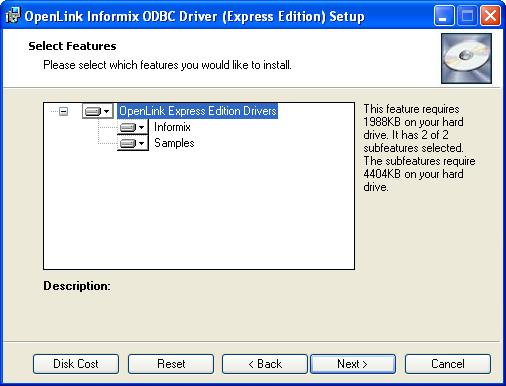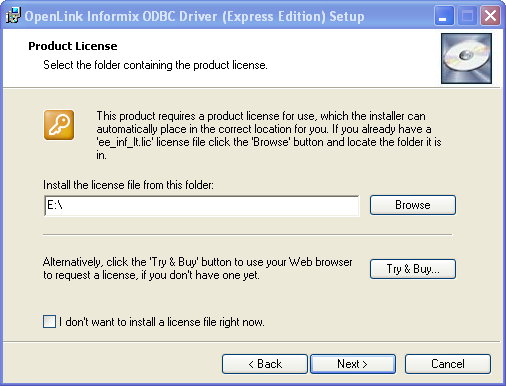

With respect to loading these can be a real pain. These are described in detail elsewhere in the FAQ ( Refer to Informix FAQ – Common Questions about the engine). This may require a backup of the database or a reset of the backup flags before the ‘alter table’ is allowed. A table is turned into a raw table with the ‘alter table type (raw) ’ statement and altered back by ‘alter table type(standard) ’ or whatever table type you choose. Once the load is complete and you wish to create indices or constraints, be sure to alter the table type to whatever you desire, typically standard except on XPS. Not only are these the ideal target for a light append, but there is no logging associate with the table. With the advent of the ‘raw’ table type, it should be noted that these are very effective for loading. So if you delete * from table and then do an express load you will have dead space in your table – this will be re-used with standard inserts, but not by the express load.
INFORMIX ODBC CONVERT MONEY FREE
In fact you have to turn them off for light appends (which is what you would want to do anyway, and then rebuild them after the fact).Ģ – Since new pages are appended, any existing free space within your table IS NOT RE-USED. This has some interesting implications:ġ – when loading a raw table or running in express mode, none of your special SQL tricks will work – triggers, indices and referential constraints are not processed. If the load is successful these pages are appended to the table. With version 7.x or 9.x there can be no varchars in the table.Ī light append writes to it’s own set of disk pages – again avoiding the buffer ‘wall’.
INFORMIX ODBC CONVERT MONEY UPDATE
To enable a light scan the table to be read must be larger than the buffer pool (note this implies that the optimizer knows this – don’t forget to update statistics), the isolation mode must be dirty read or Repeatable read or committed read with a shared table lock. When performing scans of an entire table or large quantities of inserts this can flood the buffer with data, and implies substantial overhead to manage.Ī light scan avoids this by using it’s own set of buffer pools which do not have the same associate overhead, they are typically 1-4 times faster than a traditional sequential scan. When doing an insert the row to be inserted is placed into, potentially, the same buffer. When doing traditional reads or writes to a table using the insert, update and select statements, the row in question is read from the table and inserted into a buffer. Two tables are created, one which stores the row in question and another which stores information on the error within the row. See the SQL syntax guide for more complete information. You can create them using the SQL command `start violations for table xxx’ and enable logging to them using the “set. ‘These are tables which store rows that could not be inserted into the table due to violations such as uniqueness or table constraints. You may get around this when writing to tape, but if you are dealing with that much data in a table it is highly recommended that you use one of the parallel loaders anyway. With the exception of the parallel loaders (HPL and Ploader) all of these utilities are subject to the 2GB limitation when dealing with output or input files. These load rates are intended to be compared to one another and to provide some concept of expected performance. All databases support violations tables which can handle most errors, see the topic on this below.

Performance does not exceed dbload, load, etc. Not distributed by InformixĮxtremely powerful data massaging capability. Not distributed by Informix, 2GB LimitĢGB file size limits. Entire databaseĭoes not lock the database on unloads. More complex, requires programming, 2GB Limitĭoes not retain database info, 2GB limit per table.


 0 kommentar(er)
0 kommentar(er)
